The flood crisis in Thailand is, as of right now (and probably for the next few weeks), still a big problem, but it’s a very strange big problem. If I wasn’t watching the news and monitoring the internet, I’d have no idea anything was amiss at all. Inner Bangkok remains dry, sunny, and business as usual (except now when I’m writing this, and it’s raining). However, we are very, very lucky; many parts of Bangkok’s outer areas are disaster zones, with chest-deep water, abandoned homes, random electrocutions and hungry crocodiles swimming around. This afternoon I had a nice lunch at a Mexican restaurant with a friend, and 10km away thousands of people are sitting in their devastated homes wondering how – or if – they’ll ever get their lives back together.
One thing that’s both exacerbating and helping the situation is the ubiquity of social media. I’ll start by saying that the net positive effect far outweighs the negative effects, as vital information is able to flow freely and instantaneously to the community and the world, alerting people of dangers and creating wide and effective support networks.
But it can also have a negative effect. The beauty and curse of social media like Twitter or Facebook is that it’s unfiltered and unverified. Rumors and misinformation can travel quickly and cause panic. As Daniel Honker writes in a post about social media entitled Twitter Terrorism:
[T]he potential for false information spreading virally to masses of people during or after a disaster surely keeps many public safety officials up at night. Phoney alerts not only misdirect the attention and resources of emergency personnel to non-existent threats and hazards, but they can also cause public panic, exacerbating situations unnecessarily.This is happening a lot in Thailand right now, not only with Twitter and Facebook, but with traditional media as well.
I’m not sure if there’s a Thai version of Fox News. I hope not.
Twitter has actually been the least problematic and most useful during the crisis, at least among the people that I follow. Generally, information has been accurate and trustworthy, although to be honest I’m getting a bit tired of tweets about “Soi X is now flooded with 10cm of water.” I’m sorry, but although vigilance is always adviseable and I appreciate the update, 10cm of water is not a flood. It’s an inconvenience, and anyone that knows anything about Bangkok will know that 10cm of water will usually be gone in 30 minutes. When water is at your waist; when cars can’t move; when electricity needs to be shut off – that’s a flood. Maybe I’m being too reacitonary – because really, what’s the harm in getting the word out? – but when you’re hit with dozens or hundreds of tweets like that a day, you can start to get a bit panicked, especially when many of those tweets are not followed with “Soi X is now dry again, back to normal.”
Facebook is worse, because you’re not limited to 140 characters and can spew your guts out without thought of what people may think. This has been most displayed by a few panicked and uninformed posts from a guy I sort of know. He’s a really nice guy, actually, but his Facebok posts have been irresponsible:
Where does he want all 10 million of us to go, I wonder? And how? And what reaction does he expect from this, calm and measured introspection? Stuff like this only causes panic in friends and family that read it – especially since most of the people that responded to this message had no idea what was going on in the first place.
A followup Facebook update warned that Wat Phra Kaew had been flooded. Is Thailand’s most famous temple totally underwater? Oh no! A quick check of pictures coming out about the same time revealed this:
This little girl must have gills.
Granted, flooding around the Grand Palace has gone higher than this and lower than this over the past few days, and while it’s certainly not ideal or even completely safe and should not be ignored, the place is not ‘underwater’.
The big media outlets also deserve some of the blame. Earlier today I noticed a story on the Bangkok Post website with the headline “Sukhumvit Flooded”. This is pretty major news, because so far Sukhumvit has remained dry, and it’s one of the city’s main arteries. A quick check of the story, however, revealed that actually a floodwall on Sukhumvit burst and a few low-lying communities were flooded for a few hours. It was cause for alarm, yes, but authorities quickly plugged the leak. About 30 minutes later, the headline had been changed to “Sukhumvit soi 48, 50 flooded” which was a much more accurate headline. Props to them for changing it, but when information like that goes out on RSS, email and Twitter at the speed of light, there’s little room for error.
And let’s not forget this guy, whom Richard Barrow snapped outside of the Grand Palace, trying to put a bit of sensationalism into his piece. I’m surprised he didn’t just get on his knees in the puddle.
“What’s that? No, sorry, this is the deepest puddle I could find.”
Western media has said “Biblical” floods will hit Bangkok; that the whole city was evacuating; and that the airport is closed. They neglected to mention that an airport was closed – Don Meuang, the old one serving only domestic flights, which were easily routed to the main Suvarnabhumi Airport. Again, misleading pictures were splashed all over the place, like the one below:
How do you recover if you start hydro-planing? Ha! too soon?
But Twitter user @bkkbase noted that if you look carefully, these planes have been stripped for parts and are likely sitting in an unused corner of the airport. Sure, the airport was flooded and did have to shut down, but this dramatic picture lacks all kinds of context.
Tweeter @whitegirlinasia said it best:
So that’s my rant for today. I do want to make clear that I’m not trying to undermine or dilute the true threat these floods pose. They are unprecedented. Many people have died. Disease is a very real risk. The destruction they’ve caused will cost billions to fix and take years to recover from. And while inner Bangkok is dry right now, it could all go tits up at any moment. But right now all the attention seems to be on Bangkok – the flooded provinces to the north are getting scant coverage any more. If Bangkok floods, let’s report that if and when it happens, and not resort to hyperbole and exaggeration. Those are the last things we need.


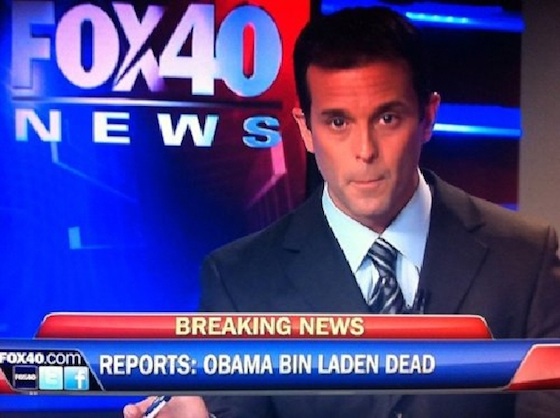

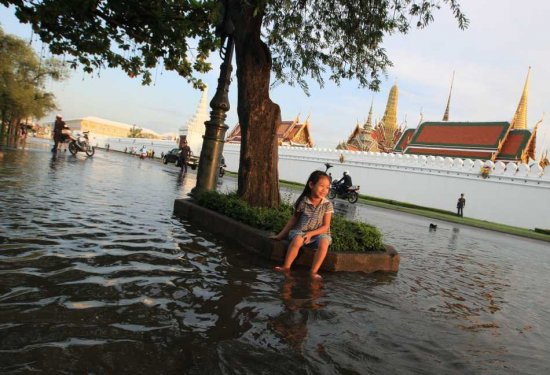

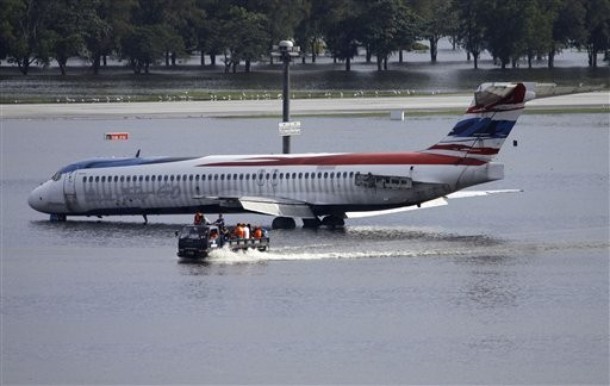

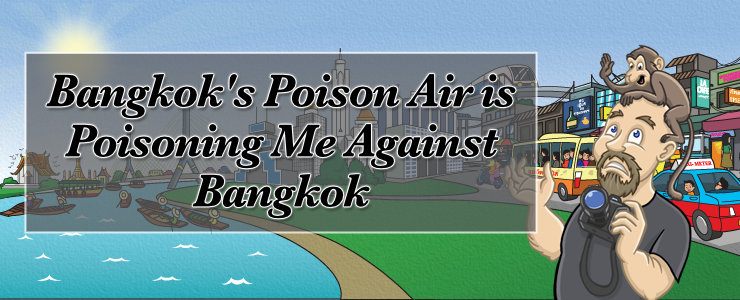
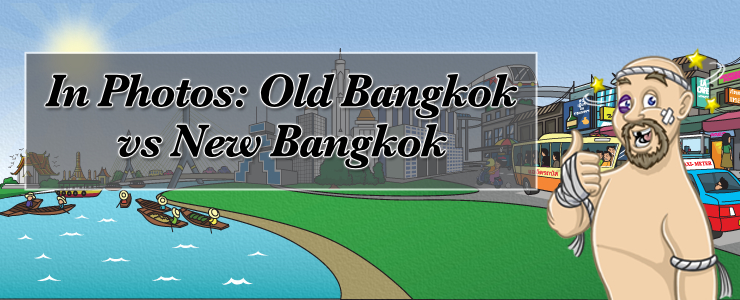
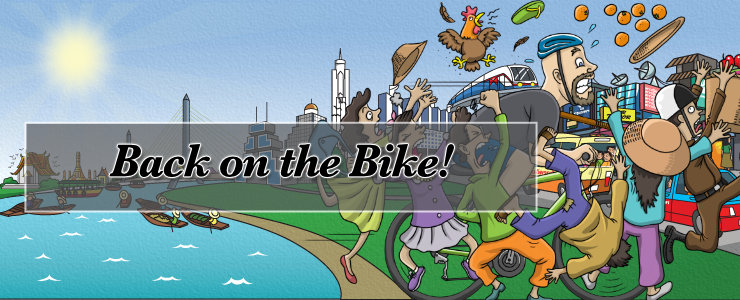
Great piece Greg, could not have said it better!
Thanks for setting the records straight… I'm more affected by the flood of concern from people back home than the "flood" itself if it were to touch lower sukhumvit…
Beautifully written and a useful article for me and the many of others living here who're getting sick of reassuring friends overseas that we're safe.
That said; shopping in Central Bangkok wasn't so easy today …
http://www.flickr.com/photos/pavion/6287879007/
Thanks everyone, I thought a bit of perspective was in order. Still many, many people are really suffering, but when people hear 'Bangkok' they need a bit of context.
Martin, I hope you stayed dry on your shopping trip, lol.
Hi Greg, I really appreciate your article. Hope many people will read it. I just came back from europe. Indeed the media there repoirted that all of bangkok goes down in a flood. From the airport suvarnabhumi until here (talad noi) no water, everything dry except our beloved neighbourhood, but just for may one hour.
thanks
uli
Well said, Greg. People need to make appropriate assessments of risk — and appropriate assessments of how they communicate that!
Wonderful words adding much needed perspective. And contrary to what is being printed everywhere I flew back into BKK from Hanoi today. The plane was about 80% full – mostly tourists – and Suvarnabhumi's outgoing queues were no longer than usual.
I'd recommend this too.
Great stuff. I am an ex BKK resident back here on a short trip. I can't believe how the UK / US media are covering this. I am in Suk Soi 16 and its businessas usual but when I arrived I expected to SCUBA from Thong Lo to Nana. Media should be focussing on why the government has done nothing over 20 years to improve drainage and flood control. The current situation is 20% natural disaster and 80% bad management.
mighty fine
thanks
A good, well-balanced report. I'm astonished at the over-reaction of some property-owners and businesses. I live in Sathorn which has so far remained unaffected by the flooding but the main branch of Kasikorn Bank in Silom has erected a sand bag wall so large that they must surely have been expecting a military coup!
Thanks everyone. We're still not out of the woods yet but it seems that now is the long, slow, painful slope back into normality.
Graham, good to hear Silom is okay. At first the glance the 2m-high sandbag wall at Kasikorn Bank looks ridiculous, but someone told me that all their servers (ie, the 1s and 0s that make up their entire operation) are in the basement. I guess in that case, it's better to go a bit overboard, but still…it does look comical. 🙂
Great article, it was the same with the yellow/red shirt situations, people in Europe/US thought that all of BKK was burning, fighting and shooting at each other, just like they now think that all of BKK is drowning.
I guess journalists like to get their pieces seen on TV and in newspapers, and know that they have a little higher chance of making the news if they make it sound a little better/worse than it actually is.
Now of course there ARE a lot of people affected but the foreign media apparently makes it seem even worse than it is
Just returned from bicycle surveillance of the riverside area between the Oriental Hotel and River City. There are signs of flooding remaining from high tide earlier today but this is confined to areas within about 300 metres of the river itself which often flood anyway. It is a bit worse than Friday evening at River City. This time I explored further and cycled past the old Siam City Bank building next to the river. This fine old building is still 'high and dry'. However, the edge of China Town immediately adjacent and upstream from River City does have about 20-30 cms. of water running through the streets. The water is draining out rapidly. Resolute diners are sitting at soi-side eateries eating their noodles with their feet in the water… There is no panic at all.
Well written, but you fail to take into account the fact that ppl are used to such sensationalism. Ppl aren't the blithering idiots that you seem to purport, and for the most part see these inflated stories for what they are. Those that don't will learn.
A post about sensationalism will not change a thing.
There are a lot of people who still believe in what they see on the news WITHOUT even consider the context. Great job Greg.